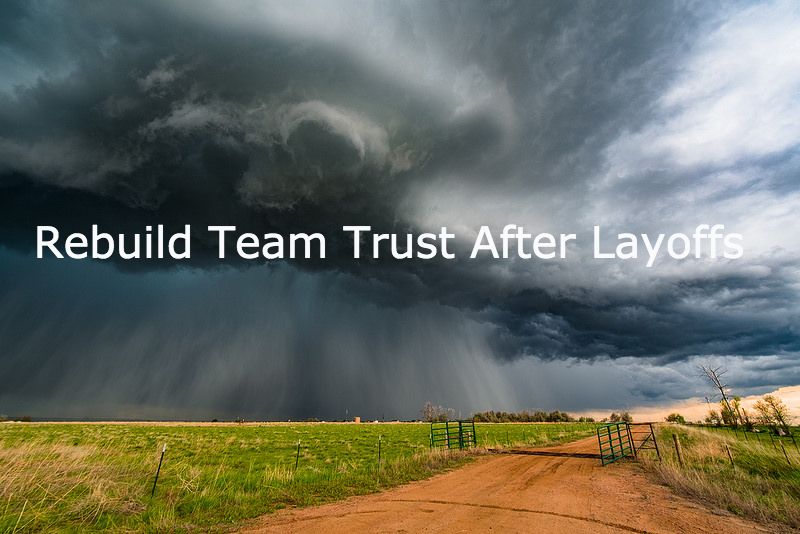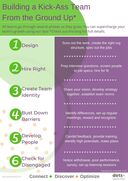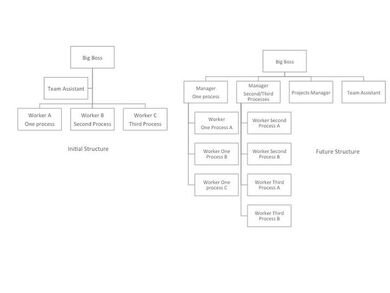Words Have ImpactWhat you say, really matters to your team. I've said it before, employees are always watching. The tone you use is important, but what you actually say can reverberate...for years!!
‘You have no idea how long something you say can stay inside someone’s mind!’ I read that quote recently and it reminded me how important it is to be mindful of my words, particularly with those who work with me. Words can lift people up or - break them down. A leader or manager's words can have such a lasting affect, especially the critical ones. Here is a great leadership book for more great tips - The Leader's Voice by Clarke & Crossland. When I reflect on comments that sit with me ‘You use unsophisticated language’, and ‘You’re intimidating’ are the ones that still ruminate for me from leaders I reported to decades ago!!! Ugggh. I'd like to erase them but they still remain in my head and they make me question my approach with clients.
0 Comments
Are you hiding the real you from work?
Can you sing? Play the trumpet? Do you bake pies? Do you laugh with your full belly? Do you snort!? Do you paint watercolour or absolutely love to garden? Do you love hip hop or can you rap? How many on your team know who you really are? Does anyone? Sadly many of us hide our full self from work, or worse….from our teams. We so often buy into this notion that we have to fit a particular stereotype to be a successful leader - it is all business, all the time. When I worked in corporate, there was an executive that wasn’t particularly liked. In fact we had many complaints about her behaviour in HR. She was an ice queen. She was ‘perfect’. She hit every deliverable out of the park, and then some. But man, she pushed her people hard! How Do You Build Your Team?Updated: February 2021
Most corporate team off sites (done onsite in the boardroom with food catered), are done with the intent of having a team building experience. You know what I’m talking about? One of those meeting when the team gets together away from their usual desks. A caterer brings in two Diet Cokes and three cans of Sprite for a team of 7. The food is the same each time, usually some kind of sandwiches, and the last person to select gets stuck with the egg salad. For team building you might add an exercise or two like “If you were an animal, what kind would you be and why”. With a few laughs and full tummies do you really expect your team to be more successful? Unfortunately these team building activities seldom generate success behaviours. Management may think team building happens when they invest in a few meals together, but the reality is your team just hopes for an early exit home. Seldom does the 'building' of a team really occur. Do Your Employees Hate Work?When great employees don’t get what they need to thrive, they wither and become a zombie before your eyes.
Has your previously amazing rock star employee turned into one of the ‘working dead’..... that quit, but stayed? How would you know if you have disengaged employees? Sometimes, it is not very obvious. Zombie employees may get sick frequently; they may complain or stew about issues more; they are more detached; they increase the number of breaks or take a long time to accomplish work; or, they seem more frustrated or annoyed. When team members, who were previously quite involved and full of life, become quiet or just don't bother trying anymore - there is a good chance they're checking out. It is becoming quite an epidemic. According to Gallup less than 13% of employees are an engaged worldwide – that means many people hate their jobs. With a concerted effort you can bring them back from the brink while preventing the further demise of your very best people. Will Your Team Follow YOU?Updated April 2020
“Let’s play follow the leader Nanni,” my 3-year old grandson says, pulling on my hand. He leads me through the house, taking me downstairs and back upstairs. We crawl, we jump and we stand still; he laughs when I shadow him and is so delighted I’m following his lead. He then says, “Nanni its your turn to be the leader!” After much laughter, we fall into a heap on the couch. Fun and shenanigans like this make for some great memories. Too bad leading a team isn’t quite that straightforward – or is it? Rebuild Team Trust After LayoffsSo your team has been restructured and the dust finally settled.
Now, you’re supposed to go back to ‘business as usual’ but things feel far from normal. As the leader, you’re in a tough position because everyone on your team turns to you for answers and clarity. But, you're as much in the dark as they are, maybe a bit ticked off too....so what do you do? Rest assured you’re not alone; heck, you can’t read a newspaper or hear a business report these days without learning about a company cutting back, laying off or reorganizing. Just like you, there are hundreds of leaders trying to find their way to get back on track, regrouping but also trying to rebuild trust of the ‘survivors’. Ever work with someone whose style drove you crazy? Perhaps they talked too slow or fast for you, were overly demanding or passive, very logical or maybe they talked so much about feelings and relationships to the point it made it difficult to get down to business? The list of bugaboos vary because what bugs one person, may not bother another to the same degree.
We each have a unique combination of behaviours and priorities; they show up as our style to others. When you work with someone whose blend is quite different to yours, they will likely strike a nerve - when you're not well-armed to understand where they are coming from. Assess for Your Own ‘Ah Ha!’ Moment One way to ease this kind of discord is to conduct an assessment that decodes both you and your team’s behavioural styles. A tool to understand clear preferences and what they prioritize compared to you. My tool of choice is a DiSC® model behavioural assessment tool – Everything DiSC®Workplace by Wiley Brand. It's simple, yet uncovers ‘pinch points’ quickly with leaders and/or their teams so they can adjust immediately. This tool works for building better cohesion in a team, improving communication, reducing tensions, but also offers self-awareness for leaders I coach, most of whom have a few ‘ah ha’ moments as a result! Over the next series I highlight each one of the four dimensions of DiSC® characterized by people I’ve worked with (names changed, of course) quick links below: DiSC®Background Harvard psychologist Dr. William Moulton Marston created the theory of DISC® in the 1920’s, illustrating that people exhibited emotions through four ‘Normal’ behaviours of Dominance, Inducement, Steadiness, or Compliance – aka DISC® In the 1950’s an industrial psychologist named Walter Clarke went on to create the first assessment using the DISC behaviours Marston founded. Over the years the assessment has been improved and updated but the principles remain the same. Today we use the terms: Dominance, Influence, Steadiness and Conscientious in the assessment. First lets start with the profile of “D” – Dominance. Meet Belinda (not her real name) Belinda is a Vice President in a Customer Service group (Canada) of a large multi national company. She moved up through the ranks fairly fast. Here are some of her traits and behaviours that demonstrate a strong “D” profile:
Do you know someone like Belinda? Or can you see a little of yourself in her profile? She is a good representative of a strong “D” behavioural style. Most of us have behavioural styles with varying degrees of each of the 4 DiSC® dimensions so certain circumstances may bring your “D” more to the forefront. For Belinda to be considered for future, more senior level roles she must make an effort to develop work relationships by recognizing the opinions, feelings and ideas from others. Taking time to get to know people versus putting them to work. Without some coaching, guidance and support from others, Belinda’s trajectory in a large multinational company will surely be hampered. Much of her advancement will depend on whom she reports to and whether she reigns in her power punches! Can you see the benefit to you to better understand your own DiSC® style and how you may impact others? Or to decode your team members so you can find the right way to communicate with them? Get Your DiSC® Assessment! Email or call me to take advantage of the eye-opening perspective of Everything DiSC® Workplace assessment or to arrange a session with your whole team. This assessment will surely provide a clearer understanding of how you affect others and decode how best to communicate for your own success. Not only will you receive a detailed report but you will also have a confidential debrief with me where we will delve into your personal profile and/or team dynamic. Call or email me when you’re ready to learn more about yourself and discuss potential career/leadership de-railers so you know how to head them off! Hire The Right Person FastIf you’re like many of my clients, you have probably posted a job to fill, only to find yourself sifting through 200+ UN-qualified applicants.
With the likes of Monster, Indeed and Career Builder simplifying the job hunting process has made it easy for what I call 'serial job seekers' to blast out applications to a mass number of postings without even reading the full job posting. But this doesn’t help you—you need to find the ‘right’ person to without wasting your time! This means you need to be extra diligent in your quest to hire, in order to reduce the number of serial job seekers you encounter. To help you find the right fit for your new role, follow these top 5 tips… Previously in this series, I covered the various phases of building a kick-ass team, including the ‘Start Up’ phase, ‘Building the Team Identity’ phase, ‘Bust Through the Barriers’ phase and ‘Kum Ba Yes’ phase. By now, if you’ve implemented all of my suggestions, you should be experiencing the ‘High Performance R Us’ phase – high five to you for graduating to a kick-ass leader!
What Does This Phase Look Like? You’ll know the ‘High Performance R Us’ phase when you see your team consistently triumph and achieve goals together. For the most part, they get along, openly discuss ideas, problems and solutions, and most importantly, they share recommendations for improvement, actively solving issues together and demonstrating commitment to the group and company. Generally the climate is positive and activated for achievement. This kind of high performing team emits a positive vibe, and as such, they make the customer (internal or external) want to work with you. So…now what? What do you do once you’ve successfully attained a high performing kick-ass team? Some say great teams eventually come to an end, but I like to think its more of a metamorphosis–just like a butterfly, your people undergo a change that gives each individual courage and esteem, which often means they will move along. Kick Ass Leaders Shift Gears At this point, some members of your team will either take on new roles within the team or move along, triggering a change to the whole dynamic. Similarly, this may also be a time when you prepare to make your own move, or you earn that well-deserved promotion! Lets look at how you can either course correct to help your team through changes or how you can begin to wrap up so you are ready to make a move: Course Correction After the team dynamic changes or the team divides after having been together for a long time, you may notice a shift in peoples’ behaviours. Watch out for complacency, disengagement or repeated illnesses. Even the highest performing employees can become frustrated with changes–they are usually the first to exhibit fluctuations in behaviour. Keep an eye on things like:
These are often symptoms of disengagement or complacency. How to Respond
Wrapping Up With Your Team If you’ve instead decided to make a move and depart from your now, high-functioning team, it’s imperative that you take right steps to leave them on great terms and in great shape. Parting ways can be difficult, but if you follow the wrap up checklist below, you’ll be sure to leave on a positive note. Check In – take time to check in with the team to reflect–review the vision and mission you designed in Part 1 and 2 and have your team help you assess the progress. Record what worked and what could have been better, and identify how the team adapted to changing requirements over the duration. Determine what were the best parts of this team and which core competencies made the group most successful and why.
Check Off – take time to celebrate the journey of the team and reflect on the growth of each team member. Sit down with a coffee and make a list of how you’ve seen each of them grow as you look back over the time you spent together. Be sure to exchange written feedback so they can keep track of their progression and enjoy the fruits of their labour – this can be done using formal performance review tools, emails or, better yet, hand written notes. Thank everyone who helped the team succeed and encourage team members to write notes to support people from other areas in the business or to vendors/suppliers who were instrumental in the success. Send a summary to your boss or present the overview at a peer meeting to acknowledge progress of the team. And don’t forget to book a fun gathering too – coffee, ice cream, drinks or an outing together will allow you to clink glasses and leave on a high note.
Check On – if you haven’t done it already, be sure to communicate to your management and HR department who on your team has high potential and may be ready to take on leadership roles. Be sure to have a development plan laid out for those specific individuals, to ensure they work on acquiring the missing skills needed to make the leap to the next level. You can continue to be a mentor whether you continue to be their boss or not.
Check Out – one of the best things about having a high performing team is the ability to export some of your talented people to other areas of the organization. Reach out to various leaders you know in other areas of the business and connect them with team members who you feel would be valuable contributors. This is a great way to help your people shine and begin kicking off their own amazing team! You can bet they will come to you as they go through their own kick-ass team development.
I hope you’ve enjoyed the journey of kick-ass team building–no doubt, you’ve noticed some consistent themes. Becoming a Kick-Ass Leader takes a great deal of effort, a lot of communication, and the ability to know when to be tough, when to take the reigns or when to let your people soar. As always, I’m at your service if you’d like help in dealing with the various phases of building your team. Reach out any time. Well you’ve made it to Part 4 of our series, Building a Kick-Ass Team From the Ground Up! So far we covered the foundational phases of building a kick-ass team, including the the ‘Start Up’ Phase , the ‘Building the Team Identity’ Phase and the ‘Bust Through the Barriers’ Phase. Now, your team is in ‘the flow’ and it’s time to make an important leadership shift!
As a people leader, once your team has reached this stage of maturity you’ll find yourself being needed in a different way. Let’s explore what you can do to ‘amp up’ your team’s success during what I like to call…the ‘Kum Ba Yes’ phase! Kum Ba Yes! Phase Did you ever go to summer camp, sit around the campfire and sing Kumbahyah? Maybe I’m dating myself. It symbolized the moment when a group of virtual strangers became friends as they were far away from home and surviving together. That is where the The 'Kum Ba Yes!' Phase gets its name. This phase is a time in your team’s development where people are getting along, they’re joined together, they know what their doing – they’ve become a real team! You’ll know you’ve reached this phase when you begin seeing signs that your team is operating effectively:
For the most part, you should see your people getting along, helping one another to problem solve and working towards departmental goals – productivity should be on the rise! So what should you do now that the team seems to need less of you? Well, your leadership challenge is to move from being “directive” (taking control) to “observational”. The idea here is to let up on the reins, trust and empower your team to operate with minimal intervention while guiding quietly from the sidelines. This will not only help strengthen individuals on your team, but it will also help to improve your overall team dynamic and build resiliency. Let’s take a look at some actions you can take to help strengthen your emerging Kick-Ass team during the 'Kum Ba Yes!' Phase: 1. Set Up ‘What’s Your Jam?’ Discussions – this is a good time to encourage individuals to stretch themselves to build new skills and find development toward longer-term career goals. By demonstrating an interest in their future your peeps will see you are here to support them, not just to get the work done but to help them grow. Meet with your people one-on-one to discuss their development plans. Yes, I’m talking even if you have a team of 30! Take a half hour to discuss their individual development – no not performance, their development (there is a difference). The focus should be on the individual and their career aspiration. What activities have been most interesting? What are their strengths? What are their career goals? Where do they see themselves in the future? And what steps are they currently taking? Then, determine a plan for how can you help them move forward. Don’t know what to ask at their ‘Jam Session’ - Check out this online guide. 2. Build It Up – book time quarterly with your whole team to depart from work and focus on building relationships! If you have budget, consider bringing in an external consultant to take you through a workshop on behavioural styles and communicating. If not, you can also incorporate easy and fun activities into other meetings such as when you have a project review or an all-hands update. Any activities that encourage learning about each other, working on a non-work initiative or fun experiential activities will strengthen the community of the team. 3. Feedback Gift Giving – I always say feedback is a gift, not sure who I heard that from. You can either accept it or put it on the shelf and disregard it. All of us want to receive feedback from our manager to know how we are doing, but feedback doesn’t only have to come from the boss! If you as the leader create an environment where your people feel safe and they trust each other, you can encourage open candid dialogue. This allows each team member to provide insights, reactions and suggestions to one another, which creates a culture of seeking and giving feedback – it’s a powerful tool! Recognize and support your team members when they make a point of acknowledging or provide constructive feedback. As mentioned in Part 3 Bust Through the Barriers phase I suggest carving out time at routine meetings to seek 'shout outs' to build a supportive, 'safe' work environment. Kick-Ass Team Tip - Pay Attention to Millennials In Gallup’s report, How Millennials Want to Work and Live it outlines that in today’s workplaces, our latest working generation are not getting enough feedback even when they ask for it. In fact, less than 20% feel they receive routine feedback, yet they seek it more than any other generation! So if you have Millennials in your team, pay close attention to this step! 4. Get Constructive – develop the art of constructive criticism! And it is an art! So often we shy away from criticizing anyone – when we grew up, most of us were taught ‘if you don’t have something nice to say, don’t say anything at all’. Well that probably means we didn’t receive much constructive advice! So here’s my take on it. Constructive criticism is no different than good ol’ sound advice! As the leader of a Kick-Ass team, part of developing your people means giving them candid advice, in a timely manner and particularly at this stage of team development – people do best when they are receiving regular feedback both positive and constructive - this includes you! Here are a few tips to keep in mind:
a) 'Thank you for preparing the report on demographics; it provided some good insights. I noticed you seemed frustrated when we discussed it with the client as they tried to ask questions. It is frustrating when someone cuts into your thoughts, but I think the client was trying to clarify what you were saying. Just be aware of your reaction and be prepared that clients will likely want to ask questions along the way.' b) 'Great effort on the report, I do see there are a couple of things which could be improved. The font is a bit small and it would be good to standardize the same font throughout the document.' c) 'You handled that meeting very well with the team – they were a rowdy group. Next time you may want to pause or put your hand up until they quiet down instead of talking over them.' Kick-Ass Team Tip – Help is here! If you have particularly difficult feedback to give to someone, consider talking it out with someone before you approach the person. Have them check your tone and check how it comes across. When you reach the 'Kum Ba Yes' Phase it means you’ve done a great job managing through some challenging times with your team. They are already in a good place, but they need a different kind of leader now to continue to be strong and resilient through change. During this phase, you may find you need some help in conducting team building and communication workshops, so give Dots Leadership Solutions a call to create a custom session for you. We can also help you prepare for any difficult conversations that you are putting off or provide a framework for your team’s development planning! We want to hear from you - comment below about your leadership journey in getting to Kum Ba Yes! How did you release control and move them along to full effectiveness? Watch for the next instalment on Building a Kick-Ass Team From the Ground Up – Part 5 – High Performance R Us How to Deal With 'New Team' CONFLICTWelcome to Part 3 of our series, Building a Kick-Ass Team From the Ground Up. So far we covered the initial two foundational phases of building a kick-ass team: The Start Up Phase and Building the Team Identity. Now, it’s time to talk about everyone’s favourite topic – CONFLICT! Truth is, conflict creates barriers to success of a newly forming team. At some point, even with a solid team that’s working together, there will be bumps in the road. It can get wobbly. Think of team building like first starting to ride a bike without training wheels. First you’re up and rolling along, but then you may begin to wobble. You're careful you don't overcorrect in an attempt to save yourself or you know you'll fall flat on your face…it is the same for a newly formed team. So, here’s how to handle your team’s wobbly period the right way: Building a Kick-Ass Team From the Ground Up Part 3 - Bust Through the Barriers VideoWe all need to feel seen! Developing the Team IdentityWelcome back to our series ‘Building a Kick-Ass Team From the Ground Up’. In the first post Part One - The Start Up Phase we covered the initial phase of team formation. In this blog, we’re moving on to building the team’s identity, which is essential for establishing team norms so that everyone knows how the team operates.
In this phase you will be hands-on and sometimes directive. This is a time for obtaining your new team’s commitment, setting well-defined expectations and clear objectives. This is also a critical time for you, as the leader, to demonstrate your commitment and follow through. Lets look at the key steps to founding your team with an identity each member can embrace. Building A Kick-Ass Team is RewardingBuilding a kick-ass team is one of the most rewarding experiences for any leader. To see the team YOU established succeed and thrive creates a sense of pride and satisfaction like no other. Do you remember how it felt to be a part of an awesome team? You were in sync, you had fun, and you were an unstoppable machine. Everyone was connected and continuously driving in the same direction to get stuff done. This blog marks the beginning of a series of posts that will walk you through the full cycle of not only building a team, but also supercharging it! Today, we start from the beginning, which involves creating your vision, crafting roles and selecting the right members. Over the course of the next few months, I will address other topics such as the settling in period, navigating through difficult times, celebrating successes and preparing for transformative windups. The “Kick-Ass Team Building From the Ground Up” series will also include tons of practical tips and tricks for boosting your own leadership capabilities, so please follow along for full access to an abundance of insight and advice. Free Tip Sheet: Building a Kick-Ass Team From the Ground Up Without further ado, welcome to part one of our series – The Start Up Phase! There are countless reasons why you may be forming a new team right now. It may be the beginning of a new project or initiative, there may be an important new business direction underway and you have to pull a group together or you need to 'restructure' due to growth. Regardless of the reason behind the new team formation, here are your steps to get started: 1. White-Boarding Let me preface by stressing one thing – do not skip this step! Even if you’ve been handed a group of pre-selected individuals to begin with, I encourage all of my clients to start with a blank slate. Before you go sticking boxes on an org chart, ensure you are crystal clear on your own vision. Grab a whiteboard and begin considering these key questions:
Having this information readily available will assist you in figuring out which roles/functions are required on the team and what work you’ll be in charge of overall. It will also provide a basis to review the team’s progress once set up. 2. Suss Out The Work When beginning to build a team, it’s common for leaders to immediately think about managers – how many they need, who they will be etc. But there is a major drawback to this approach. What tends to happen is teams end up with too many people trying to lead without clear and distinct accountabilities – and you know what they say about too many cooks in the kitchen! Instead of beginning with management, I say do a bottom-up build! Start with considering the day-to-day work of your team and allow your structure to develop according to what actually needs to get done, not how many departments you want. In order to ensure you stack your structure with the right number and level of roles, consider these questions first to group like-functions:
Your answers to the questions above should start to create a picture of how many people you really need to DO the day-to-day work? And in contrast, how many managers are actually required to manage the people doing day-to-day work. If you can, quantify the output that will be delivered – you may have to make a few assumptions at this point – and think about the ROI (return on investment) of your resources. You tend to get bigger return with ‘doers’ than with ‘managers’. Here are some common pitfalls that many leaders face during this step of a new team formation:
3. Map Your Structure - Org Design This is when you get to move the boxes around. A good organizational design drives efficiency and success. When creating an organizational structure, I recommend an accountability-based approach – that establishes a hierarchy with clarity built-in so everyone will know who is on the hook for what. Clear accountability is a critical success factor for a smooth running team. Also vital, yet sadly overlooked, is ensuring that each Manager fully understands that their responsibility includes the development of all team members, not just direct reports. This includes formalized succession planning for managers to have replacement plans for their own roles – setting this up in the beginning will make your job a whole lot easier. Now layout a future focused org structure identifying how each role reports. Every role on the org chart needs a unique and clearly defined accountability in order to reduce confusion and improve self-sufficiency. Notice we haven’t talked about the people yet? This is done on purpose. Million Dollar Tip: Never design your structure around your people. Big mistake! (Send me a message if you want to know why) Here is an example of how you might divide work initially in order to support your longer-term structure to ramp up staffing over time: Org Design ExampleOrg structures do naturally evolve as changes are introduced over time. By developing a future plan from the outset with a ‘target’ operating model (future structure) you have a tool to not only aid in the hiring/selection process, but assess potential talent to grow and develop into expanded roles. 4. Spec Your Jobs I know this may seem tedious, but believe me, this is worth the investment! Not only will this step get you thinking about what work is needed to be done and the talent you will need, but also the document you create will serve multiple purposes over the life cycle of the team (e.g. sourcing new hires, evaluating compensation, performance management). Each role needs its own job spec - a profile. Here is a free template you can use, with a filled in example of a completed one for you to reference. Consider all the elements - similar to a job posting you would need - which details the skills necessary, the type of characteristics required to be successful and the education or knowledge which is a must or nice to have in each job. If you’ve never done this before, you can cheat by ‘Googling’ similar jobs and reviewing postings for relevant content. They will give you a clue for the type of jobs in the market (no one I know ever got into trouble for using another job posting for inspiration). Just ensure your job spec thoroughly outlines the work duties, tasks, and responsibilities so that a potential employee has an idea of what they’ll be signing up for! 5. Pick Your Talent Finally, it’s time to talk about people. I could write a whole blog on just this step – I love selecting talent – but I’ll save that for another time! I’ll keep this section brief. If you already have a pool of people to select from, resist the temptation to simply slot in people you know in the boxes. Do yourself a favour and review them against the job spec for ‘fit’, and ask yourself if they are the right people to do the job. If not, you may need to post the role. This is the step where it really pays to have objective help in screening candidates and conducting interviews. Having someone to whittle the list of candidates down to a choice few will save you time – they can also be your point person to field follow up calls and emails. I highly recommend involving several people you trust in the interview stage to help you screen for ‘fit’. It’s important that anyone new joining the team or business matches both the style and organizational culture of the company. If you have management roles, start filling those first and perhaps have them join you in future interviews as you build out the team. Prepare a series of questions that will help you probe and qualify the candidates until you find the right people to fill your roles. I recommend considering the use of a comprehensive assessment tool that can give yet another dimension about fit to the team and clues for how best to manage and communicate moving forward. Dots Leadership Solutions can assist you with crafting your structure, developing job specs, preparing your selection strategy and even screening, assessing and interviewing candidates – it’s kind of our ‘thing’. Reach out today and let’s chat about the next team you’re building. Summary: Team Start Up PhaseConclusion of the Start Up Phase:
'Building a Kick-Ass Team from the ground up' series Part 2 – Team Identity Wow!! I hope you’ve been watching the 2016 Rio Olympics and have seen the strong and impressive Canadian Women’s Rugby team – it’s clear that their incredible team bond is core to making them a force to be reckoned with. So fantastic to witness the strength of this magnificent Olympic team; this powerful group clearly has an unbreakably strong bond!
They are such a perfect example of a strong crew of remarkable individuals – a tribe; a posse of people who really have each other’s back. The same high performance can be achieved in a working environment when a team develops such a strong sense of unity. Aristotle was right on the money when he said, “The whole is greater than the sum of its parts.” So what are the key ingredients to corporate teams becoming so well bonded? There are a number of different circumstances that can be the catalyst for a team to form such an enduring connection. They may have gone through a seriously difficult time together, they may have worked through a tough project or they may have grown together through a unique experience like a new business venture or a new department build. Regardless of the situation, there tends to be a common recipe for a strong team, which can be broken into five key components: The Leader When reviewing cases where the strongest bonds are formed, the leader plays a crucial role; they genuinely and openly care for their team and are mindful of the needs of each individual. They also set high expectations; they deeply believe in their team and set them up for success by leveraging the strengths of each person. The Trust Based on empirical research, Stephen Covey's book The Speed of Trust sums up the art of building trust as the single most critical leadership skill “the one thing that changes everything”. But it’s not just the leader who has to develop trust, it’s also the ‘trust contract’ established between the team members. This faith is demonstrated under pressure during the toughest of times. Difficult times are when you need to lean on each other the most. Can you count on each other through a rough patch? Does you team have your back and do you have theirs? The Fun Whether during a planned team event or not, the degree to which you and your team laugh is a terrific way to gauge a team’s bond; a group who laughs together stays together. Think about the last time you had a great belly aching laugh with your team and colleagues. Sadly many corporate environments avoid laughter in the workplace because there seems to be this mistaken belief that it is not professional – bun that! As long as the laughter doesn’t come at someone’s expense or disturb others, it is completely appropriate! Some of the best moments occur particularly when tension is high. Imagine a bunch of employees are working with their heads down, all tense and serious, when someone bursts the tension by making a light-hearted joke – how refreshing! Here is a great post by startups.co.uk discussing 30 Ways to Have Fun and Unite Teams, which includes very simple suggestions to inject fun at work. The Goal Being a part of a group who have a lofty goal, a mission to accomplish or a really challenging task builds common ground for people who come together from very different places. The Olympics is a perfect example of this. Even athletes coming from the same country to compete in a team are often coming from ‘different walks of life’. They may have never played together before joining this team, but they share something huge in common – their drive to excel in the Olympic games and win a medal! If everyone understands the goal, they develop appreciation for the reason why it’s important to achieve and they will tend to check their ego at the door. Even better when the goal is tough and the group has to tap into problem solving. People can’t help but communicate more and share ideas when there is little time or room for posturing and ‘one-upmanship’. It’s becomes a survival skill. You can do a simulation survival exercise to test this thinking by checking out this Team Exercise courtesy of the Winnipeg Regional Health Authority. The Appreciation At first you may think it’s great to get a nice bump of compensation or a year-end bonus as a result of doing great work. But the truth is what people generally remember isn’t the bonuses – in fact I bet if you ever received one you don’t even remember how much it was. Sincere and genuine appreciation in the form of formal recognition, hand written letters, plaques and special presentations on the other hand are just plain HUGE! I remember working with a President and suggesting that he provide a handwritten note to a team who had done something no one expected them to do. We made sure there was a presentation from him to each team member, but he thought I was crazy when I suggested it. To his surprise, for years later people talked about receiving those notes, and all of those people are still united over that small gesture today. Never underestimate the power of a hand-penned note filled with sincere gratitude! As I watch this amazing group of young women on the Canadian Women’s Rugby team compete at the 2016 Rio Olympics, (in the semi-finals at time of writing) I’m reminded just how a well connected team can be virtually unstoppable working together. I hope your own group can leverage the learning from this powerhouse of a well-formed team! Go Team Canada Go!! If your team is struggling to bond together, or there are difficulties in working together consider seeking some outside help and support. Check out Dots Leadership Solutions blog for additional free suggestions and guidance or contact us for a consultation. Photo Credit: http://www.gettyimages.com/detail/480540072 |
Most Popular Posts:
AuthorElaine Adamson is a leadership consultant with Dots Leadership Solutions Inc. A natural dot connector. Passionate about coaching team effectiveness and leadership development she shares over 25+ years of real-life tips and tricks that really work! 
Elaine believes you can discover and leverage strengths to forge a strong team dynamic despite business challenges or organizational change.
She posts some great articles on Linked In too! Topics of Interest
All
Archives By Date
November 2022
|
Specialties |
Company |
|

















 RSS Feed
RSS Feed